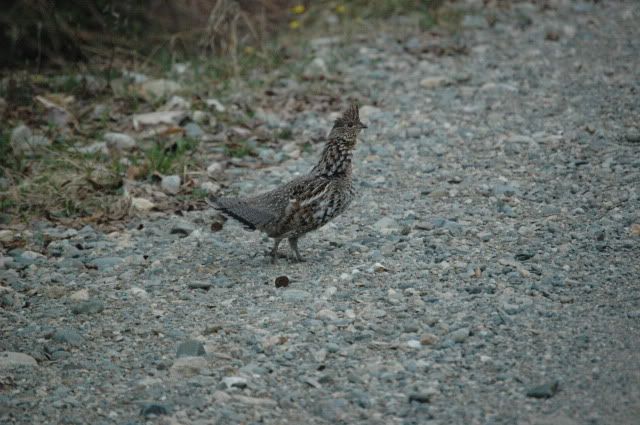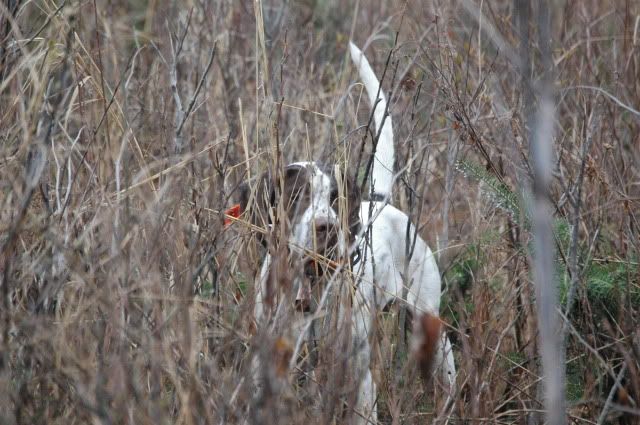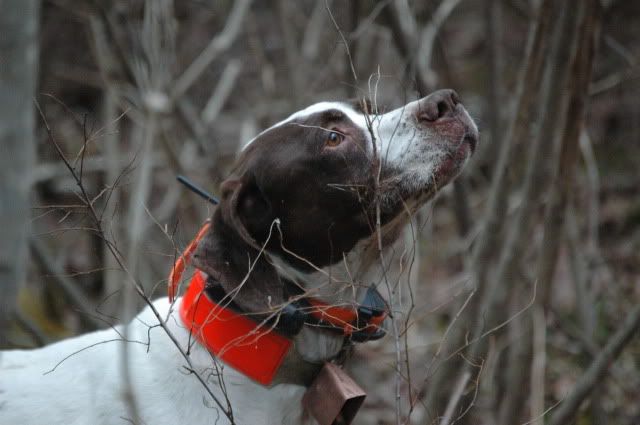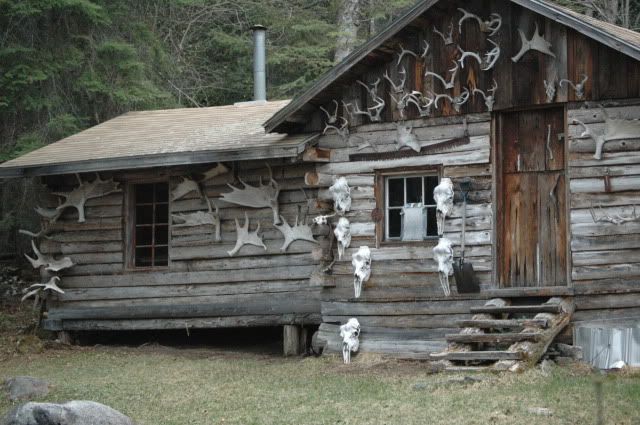(As Wednesday is a school day here and the dogs get a break I thought I'd post this article from the Summer 2006 Issue of FIELD TRIAL MAGAZINE. We will be utilizing the bird field a lot in the coming weeks and I'll let you know how it progresses)
As
summer will soon be upon us, a fortunate few are making plans for a training trip to
the prairies. Others look to the north woods to work dogs on young broods of
grouse. Some of us are lucky enough to
live where there are good populations of wild birds in the summer. Despite the allure of the wild birds and what
can be accomplished with them, the reality is that as much or even more can be
accomplished, especially with young dogs, in a backyard acre that is groomed as
a bird field. Those of you who have
attended the George and Mike Tracy Seminar have seen that they work their young
dogs on pigeons and quail in a very small area.
Pigeons are used in a few mowed strips behind the kennel, while dogs are
worked initially on quail in a small area referred to as “the orchard” which
may encompass a half acre.
 |
Remote launchers are great for
getting a dog to stop creeping. |
In these small spaces, dogs start off on
checkcords and graduate to an electronic collar on the flank as they
progress. Modeling the training area
here at FTM on what I have picked up from George and Mike, I have developed
about an acre that holds two quail pens and a pigeon coop. The youngest dogs are started on a checkcord
with pigeons and quail in some sort of restraints. We use everything from multiple electronic
launchers that cost hundreds of dollars to $4.00 pigeon restraints. I even won a couple of homemade tip-up traps
in a raffle that work great at keeping quail where you want them (I’ve since
bought more of these).
 |
Tip-up traps like this one made by
Mike Flewelling work great with
both quail and pigeons.
|
When the dogs progress to the point where
we can depend on them to point staunchly, we will release quail without
restraint and let dogs move freely through the area to establish point. Most will wear a collar on their flank at this
point. But early in the program every
dog is on a checkcord. The electronic
traps are great for staunching up a dog that wants to creep. One step and the button is pushed releasing
the bird followed by a correction that starts with simply setting the dog back
and escalates as the dog understands what you want it to do.
In the FTM bird field, I have left
numerous clumps of small trees in which we can plant birds. I have left enough clumps that we can plant
birds in different locations for each session.
It is interesting to watch a dog come out of the truck and point the
clump where you planted the bird last time.
Knowing where the birds are allows us to move the dogs along, forcing
them to use their noses to find the bird.
Even the biggest running shooting dogs in the string will adjust to
staying in the bird field, even when you get to the point where you can turn
them loose.
 |
Even Wild Apple Jack spent a
lot of time in the bird field
in his younger days. |
There are two different quail pens and a
pigeon coop at the bird field. One of
the quail pens is the Johnny house style, the other is the low type with a
hinged divider at one end. The birds in
the Johnny house tend to fly a little stronger as they get more exercise flying
up and down to and from the perching shelves.
The low pen allows the birds to be pushed to the front of the pen and
then the divider is dropped to trap them near the doors in the front, where
they can be easily caught or released.
The pigeon coop easily accommodates 30 birds which
 |
Tony has both a check cord
and a bellyband on this dog
that is staunch but is being
taught to be steady to wing and shot.
|
allows us to work a
number of dogs in a short period of time.
In a recent session, Tony Bly, a well known cover dog owner/handler;
Dana Glover, a neighbor with an old-style setter gun dog; and I worked seven
dogs in about an hour. Each dog had at
least two controlled finds and all are making progress. Having a couple of guys to train with helps
speed the program along as there is always an extra hand to hold a checkcord or
grab some more birds. Keeping the
sessions for each dog short and only doing this three or four times a week
prevents the dogs from getting bored with the program. On other days, dogs are worked for
conditioning. I’m fortunate that I have
plenty of places to let the dogs run. If
I didn’t, I would figure out some way to road the dogs especially later in the
summer as the field trial season approaches.
I have seen other bird fields where a
section of the backyard was left with a few unmowed strips that allow enough
cover to plant birds. Those who run in
trials where dogs are expected to run the edges will probably find strips a
better bet. For my dogs that compete
mainly in cover dog trials, I find the small clumps of cover more
appropriate. This can be accomplished
simply by allowing a ring of grass to grow up around the trees in the
yard. So, if you’re not going to make it
to the prairies this summer, you may want to look at your backyard and create
your own bird field.









